Vlogging is on the rise and is a great way to make money online. Find our how in this guide.
Key takeaways
- Consistent uploading (weekly or more) can boost view counts by 30-50% compared to sporadic posting.
- Start vlogging with basic equipment like a smartphone and free editing tools, then upgrade as you grow.
- Authenticity, creative storytelling, and audience engagement are the key qualities that make vlogs successful.
Today's video creators are the new celebrities: They grab attention, earn respect, and influence what's popular. Plus, they're making good money. Data shows the creator industry will be worth $500 billion by 2030, and vlogging is one facet of what’s fueling this growth.
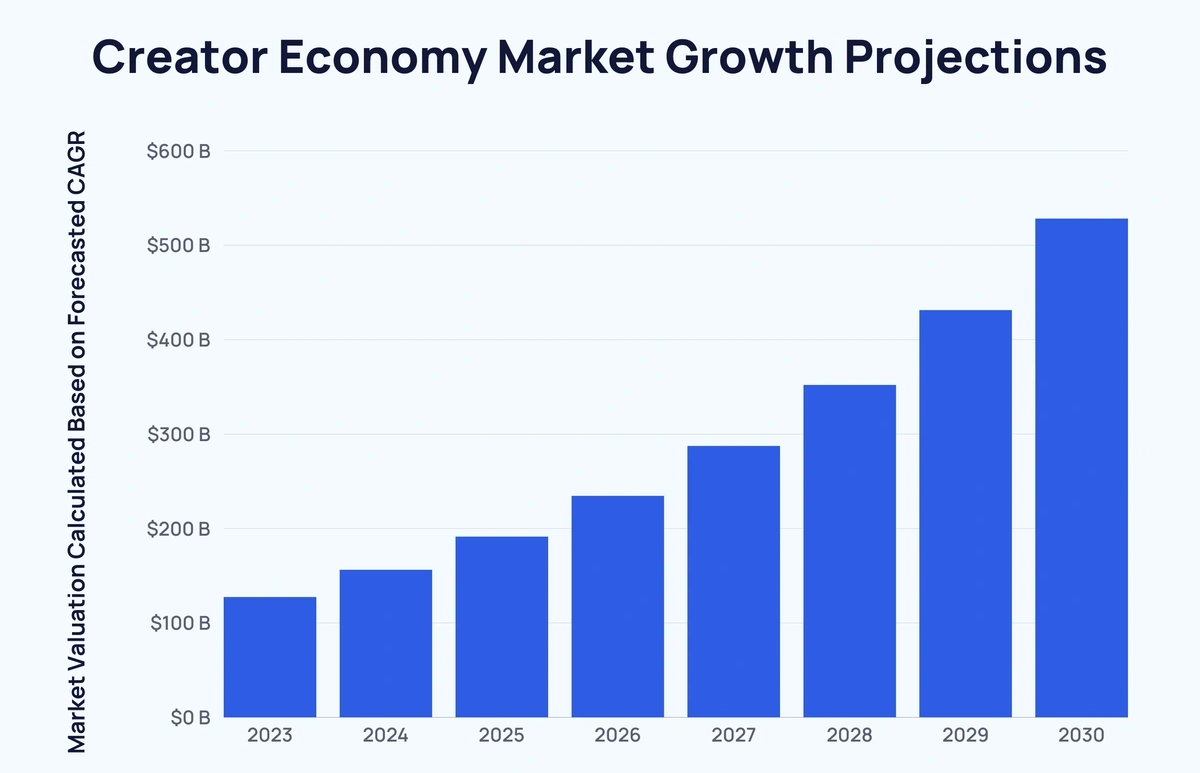
For the first time ever, the average person can become famous (and rich) without big companies backing them. Platforms like YouTube, TikTok, and Instagram have become launchpads for aspiring creators, offering them direct access to global audiences. This low barrier to entry means anyone with a smartphone and an internet connection can kickstart a lucrative career.
Video bloggers (AKA vloggers) make money by entertaining people online, teaching them skills, or sometimes, simply giving them a sneak peek into their daily lives. With a video camera and a few basic video editing skills, some are carving out entrepreneurial paths that keep them from working a traditional 9-5 job. As brands increasingly recognize the power of authentic, relatable content with a strong visual component, they allocate more significant portions of their advertising budgets to collaborations with these new-age celebrities, further fueling the creator economy's explosive growth.
Want to try it yourself? Here’s what you need to know to get started on the path to vlogging.
The Rise of Vlogs and Vloggers
The vlogging industry has experienced exponential growth since its inception. The influencer marketing industry (which includes vlogging) is valued at an estimated $16.4 billion in the US, representing nearly tenfold growth in just six years.
Data shows that 65% of women between the ages of 16 and 34 and 50% of men in the same age group watch vlogs every week.
But what are vlogs and vloggers?
Vlogs are video blogs that document personal experiences or opinions shared online. Vloggers are content creators who produce these videos, regularly updating their channels with personal stories, daily activities, or specialized topics and engaging viewers.
“Vlogging” emerged organically as video blogging became popular in the early 2000s. While no single creator is credited with originating the vlog format, Adam Kontras is often credited with creating one of the first vlogs in January 2000, when he posted a video along with a blog entry.
Casey Neistat pioneered a unique style of vlogging that blends personal storytelling with high-energy cinematography and fast-paced editing techniques. He popularized the "daily vlog" format on YouTube, documenting his daily life in New York City with a raw, authentic approach that resonated with viewers.
Neistat's videos are characterized by their unique edits, time-lapses, drone shots, and candid narration. He often incorporates motivational messages and behind-the-scenes glimpses of his work and personal life.
When Neistat began daily vlogging in 2015, he had around 500,000 subscribers. Consistency pays; by the time he ended his daily vlog series in 2016, his channel had grown to over five million subscribers. As of 2024, his YouTube channel has approximately 12.6 million subscribers.
As platforms like YouTube and TikTok gained traction, vlogging evolved from a niche hobby to a lucrative career.
YouTube, a primary platform for vloggers, has seen remarkable growth. In 2015, there were about one million content creators earning money on YouTube globally. By 2024, this number had significantly increased. There were over two million channels in the YouTube Partner Program in the U.S. alone, and the global number of monetizing creators was much higher, estimated to be around three to four million. Improved smartphone cameras and editing tools have democratized content creation, allowing anyone to share their stories.
Today, vloggers are an essential part of the Creator Economy, covering diverse topics, from travel and lifestyle to education and entertainment, and attracting millions of viewers and significant brand partnerships.
How to Start Vlogging
Here’s the fun part: creating your first vlog. To get you off the road and running we’ve put together an easy-to-follow guide below.
Define your niche
Choose themes for your vlogs that you're passionate about.
- Are you a seasoned digital marketer? Give viewers a sneak peak into your life with a vlog around “A day in the life of a marketer at [Your company.]”
- Food enthusiast? Give viewers a virtual walking tour of the best local food haunts in your neighborhood.
- Love planning weddings? Take your audience on a behind-the-scenes reveal of high-drama wedding planning.
Over time, and with some practice, work to develop a signature vlogging style that viewers will know and love you for.
Go vlog hopping for inspiration. Beauty creator Lauren Curtis’ journey is an example of how you can expand into vlogs once you’ve developed your niche audience. The beauty creator started out with content like makeup tutorials but later expanded her YouTube channel’s appeal by adding a vlog component, offering advice on boys, high school, break ups, bullying and self-confidence.
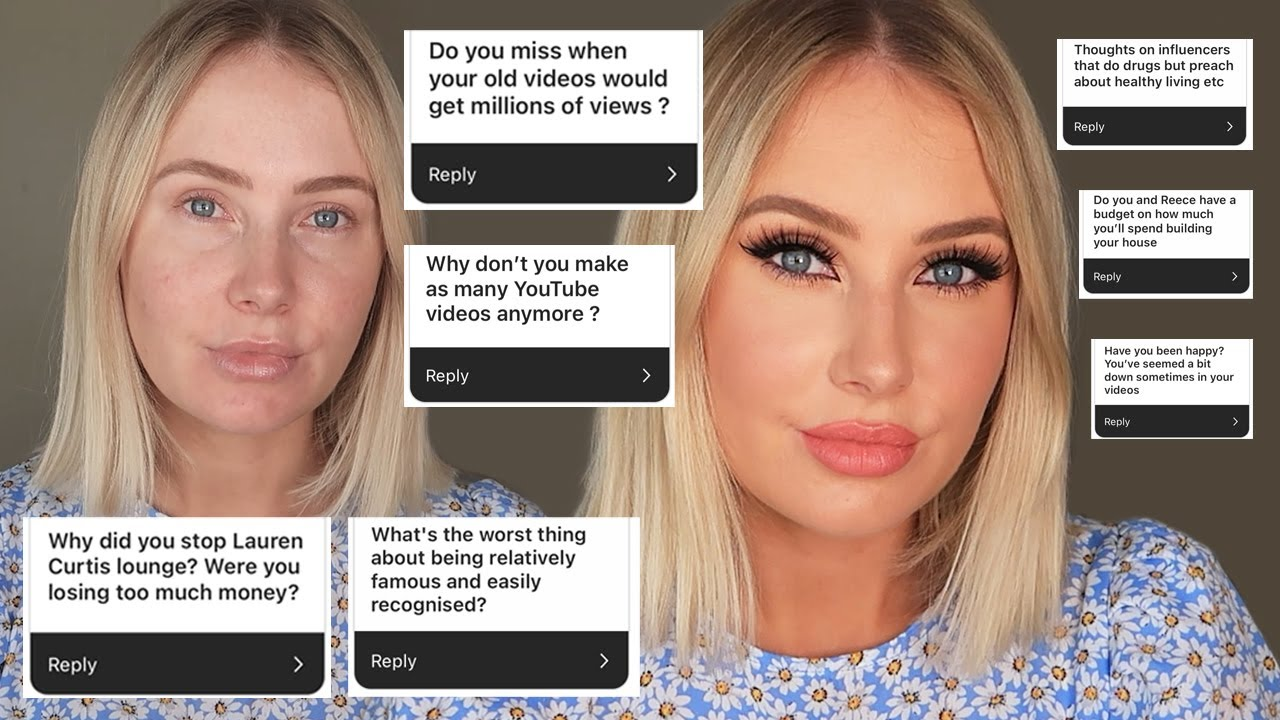
Plan your content
Outline video ideas and create a content calendar, including planned upload dates, video titles, descriptions, and production timelines. This will give you direction, and help you stay organized and consistent. Tools like Asana and CoSchedule can help you make a video content calendar and manage the production process.
Fun fact: Creators who upload consistently (e.g., once a week) often see 30-50% higher view counts compared to those who upload sporadically.
Invest in basic equipment
Every vlogger needs a toolkit, but you don’t need to start with top of the line gear. Keep it affordable in the beginning and scale up as you grow and are in a position to reinvest earnings into your business.
- Camera: Start with what you have, even if it's just a smartphone. As you progress, consider upgrading to a dedicated vlogging camera or DSLR.
- Microphone: Good audio is important. A lavalier mic or shotgun mic can significantly improve sound quality.
- Lighting: Natural light works well to start. Later, invest in a ring light or softbox for more control.
- Tripod or stabilizer: Essential for steady shots, especially when moving.
- Editing software: Begin with free tools like OpenShot, Shotcut, or Olive. Later, you can consider investing in more advanced editing software. There are plenty of free video tutorials online that can help you ace your editing game.
Set up your filming space
With vlogging, most of your filming will be done on the go. However, It’s always good to have a home-base for “talk to the camera” shots, so try to create a dedicated area for filming at home; ensure it has good lighting and a clean background.
Make an effort to understand basic filming techniques like framing, composition, and lighting. Practice speaking to the camera and develop a comfortable on-screen presence.
Pick a platform
Where should you be posting your vlogs? Well, it really depends on where your audience spends the most time. Is that Instagram? YouTube? TikTok?
YouTube is a good place to start.
- Set up an engaging profile picture, banner, and description.
- Choose a name for your channel or handle that reflects your content. Optimize your video titles, descriptions, and tags for discoverability, taking inspiration from others in your category.
- Write an engaging "About" section describing your content focus.
- Finally, adjust your layout and customize sections to showcase your best content.
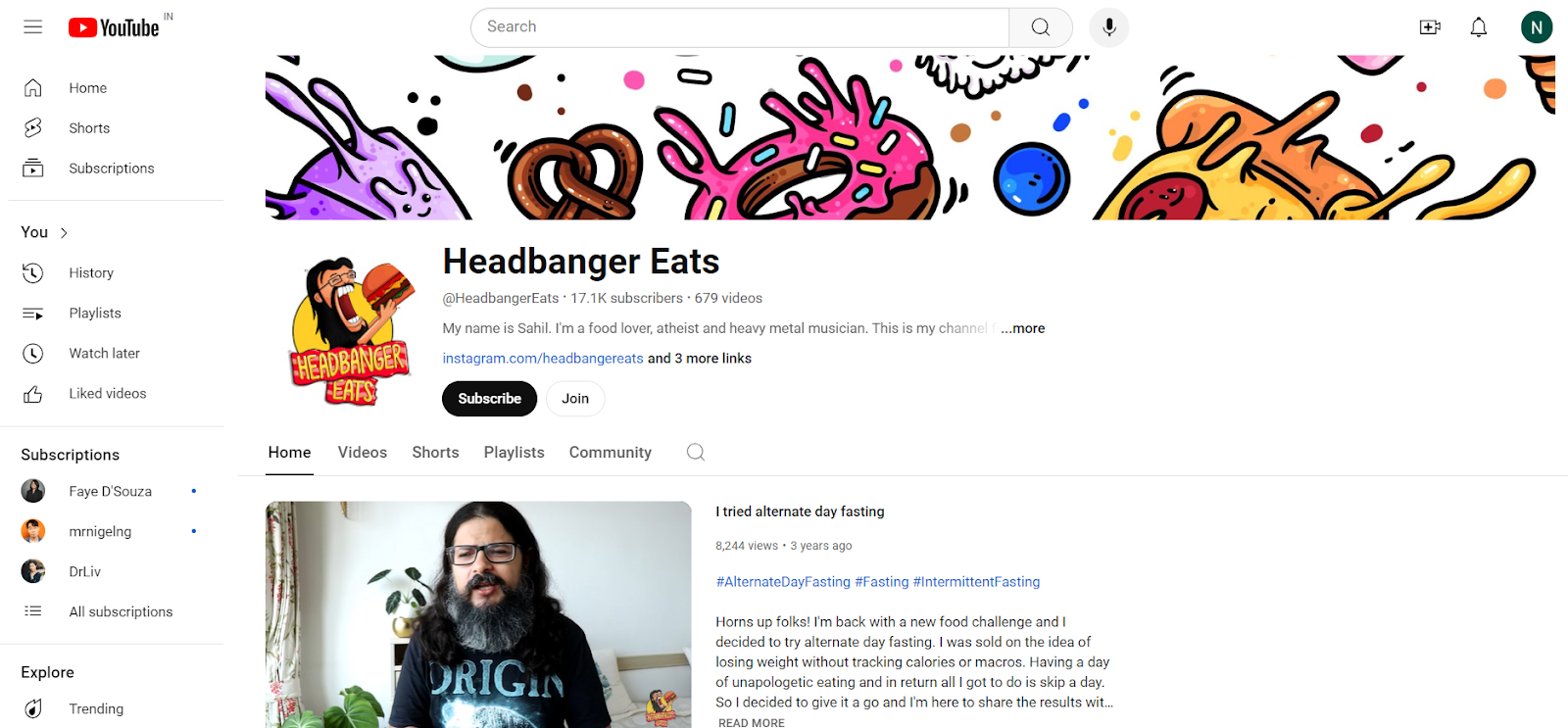
Establish a consistent posting schedule
Whether it's daily, weekly or bi-weekly, stick to a regular upload schedule so your audience knows when new videos roll out and can look forward to them. Different platforms may have different optimal posting times. For YouTube, posting 1-3 times per week is ideal, while on platforms like TikTok, posting daily or even multiple times per day can be beneficial. On Instagram, you can post on your feed 3 to 7 times a week and daily for stories.
Promote your videos
Share your content on social platforms and take the initiative to collaborate with other vloggers to cross-promote and reach new audiences. The organic reach of your vlogs will grow, and you’ll be able to connect with new watchers thanks to the cameo.
Casey Neistat, for example, has collaborated in his vlogs with Jesse Wellens (PrankvsPrank) and worked with Marques Brownlee (MKBHD) on tech-related content.
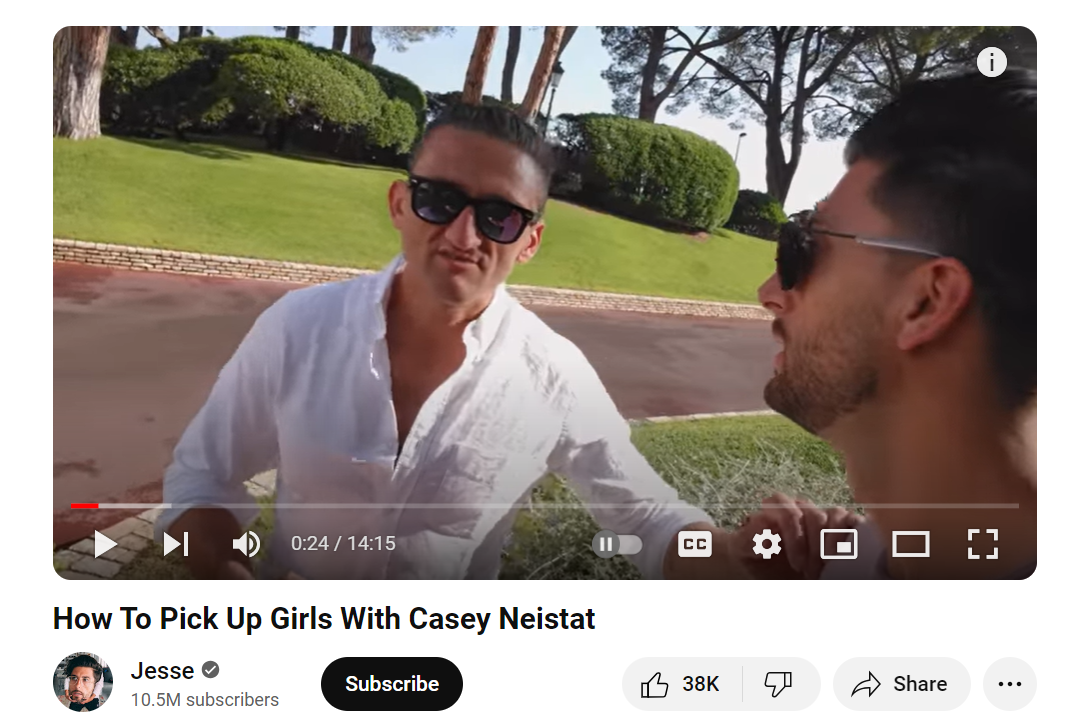
Research popular hashtags in your specific niche or create a branded hashtag for your content. You can also share teasers of your videos on platforms like Twitter and use Instagram Stories to drive traffic to your YouTube channel. Paid promotions can wait until you’ve built up a strong subscriber base and figured out how to consistently post quality content.
Analyze and improve
Deep dive into your YouTube Analytics to understand your audience and which content performs best.
- Analyze viewer demographics, watch time, and engagement metrics on YouTube Analytics. If a 20-minute video loses viewers after 10 minutes, consider creating shorter videos or placing key information earlier.
- Track which video titles, thumbnails, and topics resonate best with your audience. Then refine your approach periodically based on these insights.
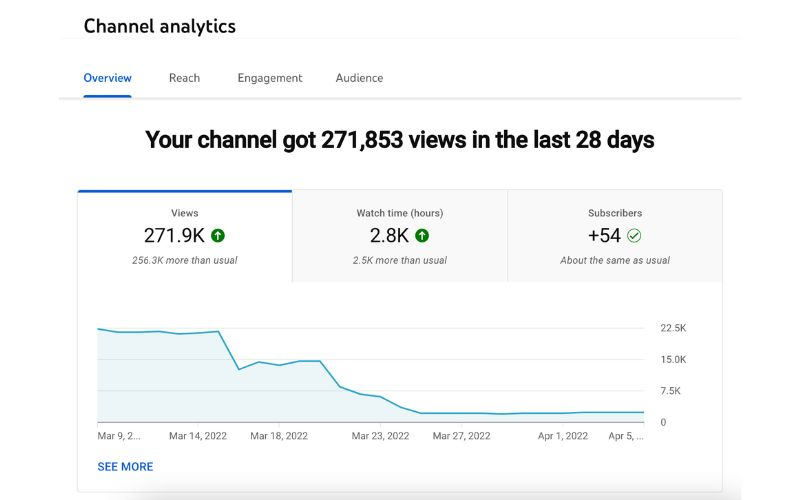
Engage with your audience
Respond to comments promptly, ask for feedback, and build a community around your content. Host live Q&A sessions or AMAs, organize contests or challenges, and create exclusive content for your loyal followers. All of these forms of interaction can provide you with valuable insights and foster loyalty.
Remember that fans love to be recognized, so highlight user-generated content and personalize your interactions when you can.
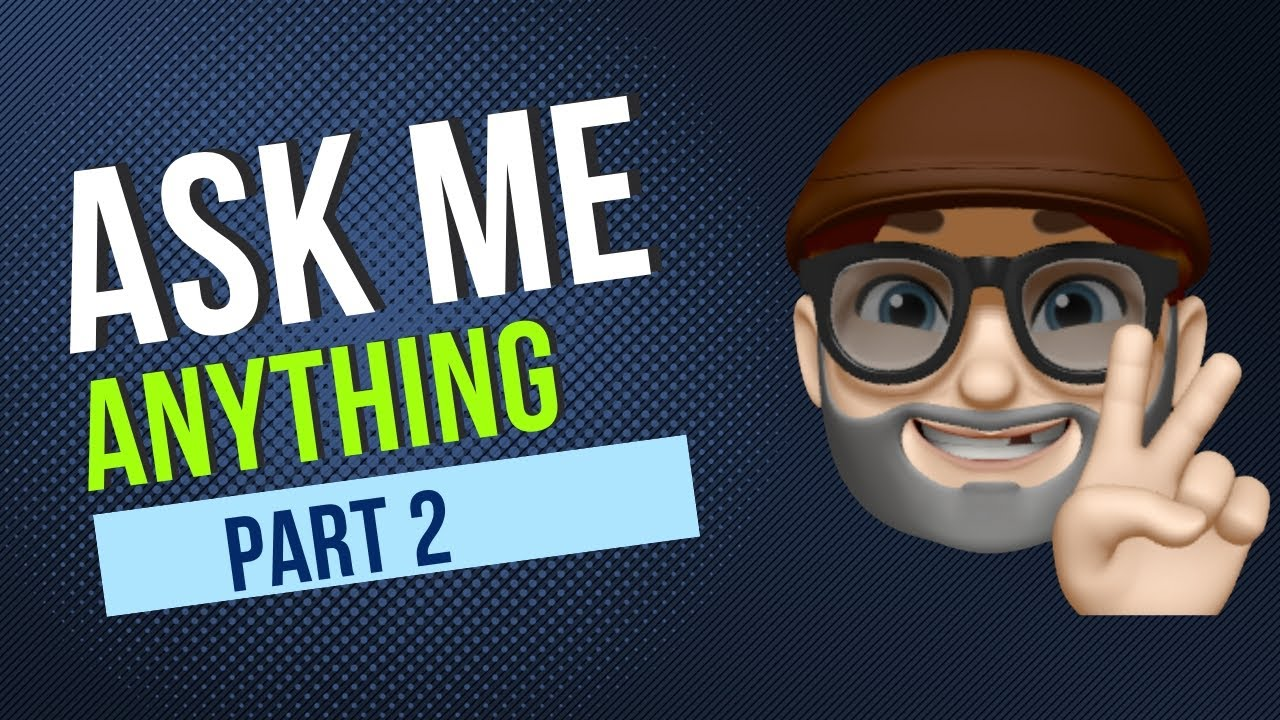
The Top Qualities of High-Performing Vlogs
Starting out as a vlogger? Here’s a quick checklist to give your vlogs the best chance at performing well.
✅Authenticity: Being successful as a vlogger often means showing your genuine self to your viewers and allowing them to connect with you on a personal level. This authenticity helps build trust over time and increases audience loyalty.
✅Consistency: Create a posting schedule and commit to it. Regular uploads on a predictable schedule keep viewers engaged. Do your viewers know that your vlogs drop every Tuesday at 9:00 pm? It gives them something to look forward to and keeps them coming back for more.
✅Creative storytelling: The ability to weave compelling narratives, even in mundane daily activities, is what keeps viewers interested and emotionally invested in the content.
✅Attention-grabbing thumbnails and titles: These elements help your content stand out in the cluttered digital space. Effective thumbnails use bold colors, clear imagery, and text overlays. Compelling titles employ curiosity, urgency, or value propositions. Together, they help attract initial clicks and views, especially for new viewers.
✅A strong call to action: Effective vlogs often include clear calls to action, encouraging viewers to like, comment, subscribe, or check out related content. To grow your subscriber base, remind users to hit that subscribe button after every video.
✅Relatability: Sharing both successes and failures helps your audience relate to you on a human level and fosters empathy and connection with viewers who experience similar life challenges and triumphs.
✅ Cross-platform presence: This is an important one. While you may be focusing your growth on one platform, leverage multiple social media platforms to promote and extend the reach of your vlog to boost performance.
How to Promote Your Vlogs and Grow Your Audience
Your vlog is up and running. Now what? You need to get eyes on your content! Promoting your vlog requires a multi-pronged approach that includes SEO, collaborations, and social media tactics.
Pick your top social platforms: Put your vlog on all the social media you use, especially the ones where you have a strong following. Write fun click-bait captions and talk to people who comment.
Make your vlog easy to find online: Writing click-worthy titles, descriptions, and tags that match what your vlog is about makes it discoverable. Make eye-catching thumbnails so people want to click on your videos. A thumbnail essentially captures the essence of your video in one image and boost its clickability. Tools like Canva have a free video thumbnail maker.
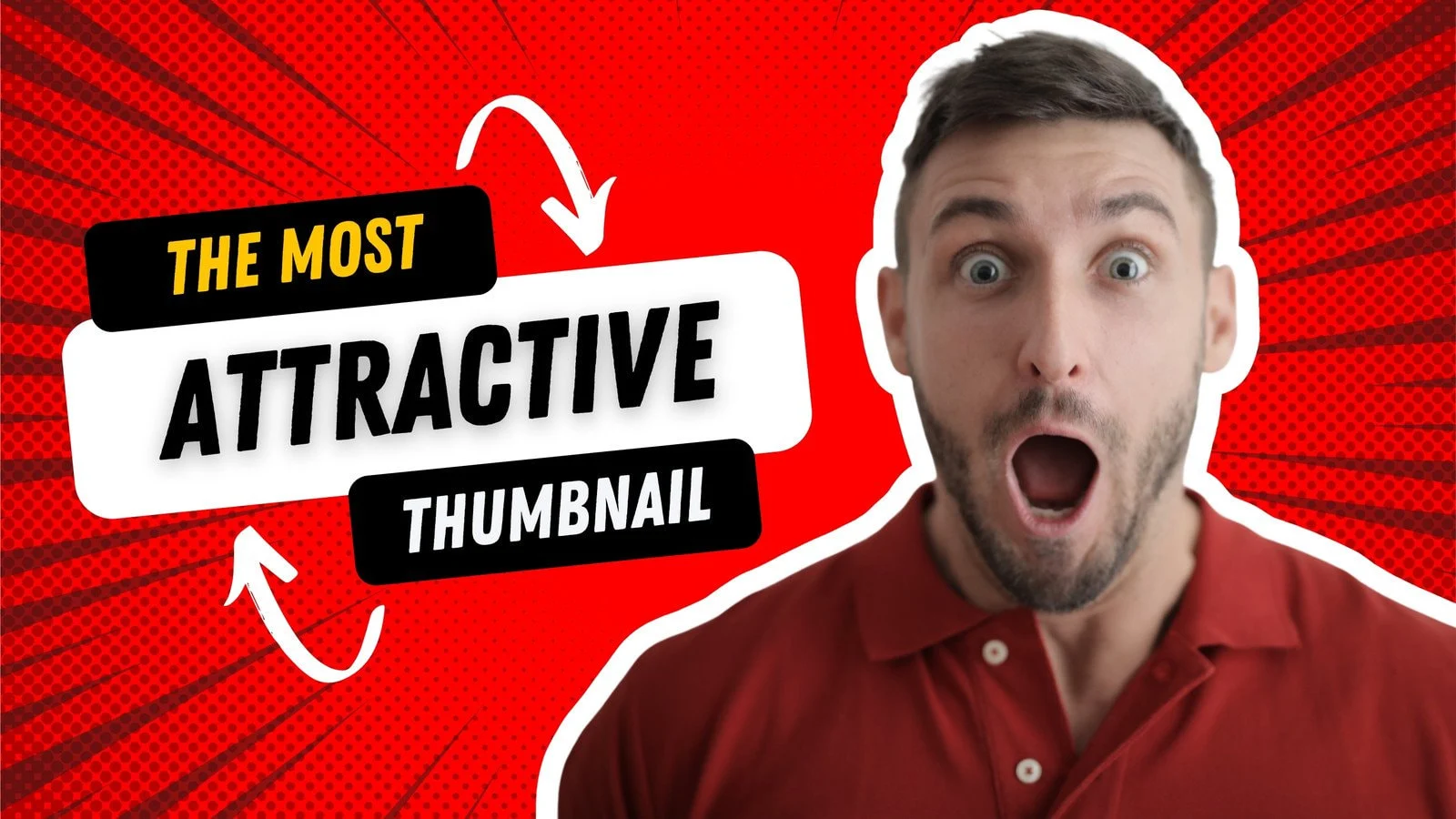
Collaborate with other vloggers: When you're in someone else's video, their fans can become your fans too. Work with other vloggers to share each other's channels. Try being a guest on podcasts or videos that are similar to yours, too.
Do fun giveaways: Get people to share your vlog by giving away cool prizes your viewers will like, such as your own branded merchandise, gift cards, or special experiences. You can reach out to brands and run sponsored giveaways too.
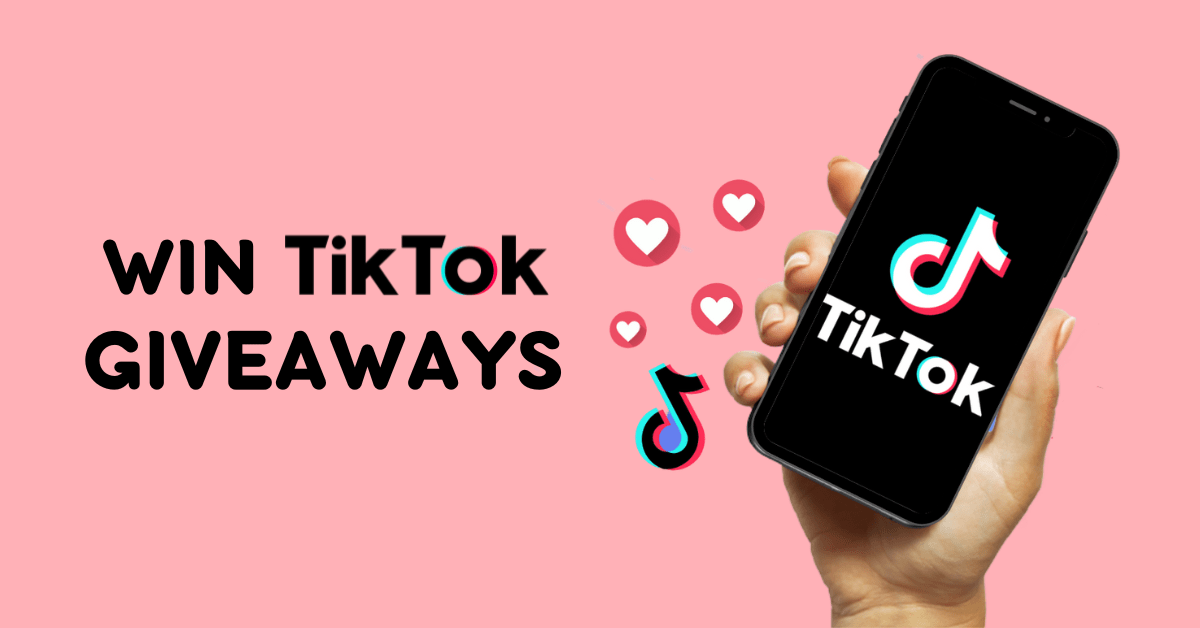
Top tip: Make your vlog channel stand out with good branding. This helps people remember you and know it's your content when they see it on different sites. You can use free online tools to make a logo and channel banner that looks nice.
How and When to Monetize Your Vlog
Once you’ve got into a steady routine of putting out your vlogs, it’s time to think of the next step: Monetization. Making video content is only half the battle - the other half lies in monetizing likes, views, and shares into a sustainable income.
The good news? There’s never been an easier time to monetize video content online. And, there are multiple ways to do it.
While most platforms offer creators partnership models, you can also capitalize on your viewership with brand partnerships, ad placement, affiliate marketing, and more.
What is Video Monetization?
Think of your videos as digital products. Video monetization is the practice of revenue generation via video content.
Monetization options have grown massively with the growth of video content, particularly on platforms like YouTube and TikTok. Beyond ads, you can monetize your videos in other ways, such as partnering with brands to offer exclusive content. Like physical products, you can sell, rent, or even sponsor them. The key is to understand your primary audience and align your monetization strategy accordingly.

Popular Video Monetization Models
Advertising? Affiliate marketing? Explore the popular video monetization models creators are using today and find out what’s right for you.
Advertising-Based Video On Demand (AVOD)
AVOD is a popular model for creators who choose to keep their content free and accessible. Ads displayed within or alongside video content drive revenue. The model is successful as it enables you to reach a vast audience with no paywalls. Most YouTubers have ad placements within their content.
While AVOD is a common way to make money, it can cause viewer friction as it interrupts their video-watching experience.
Affiliate marketing
Recommend products on your vlogs and earn a commission when viewers make purchases through your unique affiliate links.
For example, if your vlog is centered around a day in your life as a content creator, you can plug in affiliate links of the tech equipment you use to shoot your vlogs. When your audience clicks these links and buys, you receive a percentage of the sale. This incentivizes authentic recommendations and builds trust with your followers.
Sponsorships
A sponsored deal is when you partner with brands to promote their products or services in your videos. These partnerships can be lucrative for influencers as they provide a substantial source of income. Sponsored videos often include exclusive brand offers so they benefit your audience too. However, remember to maintain transparency and disclose any sponsored content to your viewers.
Tips/Super Chats
Allowing viewers to send monetary tips during live streams is one of the newer ways to monetize from vlogs. These tips, often called "donations" or "superchats," provide a direct way for fans to support their favorite creators in real-time. Platforms like YouTube, Twitch, and TikTok have integrated tipping features, allowing viewers to send varying amounts during streams. Monthly earnings from superchats can range from $50-$100 for smaller creators to several thousand dollars for larger ones.
Top 5 Vlog Platforms
Vlog where your audience is. That means using one or more of the top video platforms. Here's a closer look at each platform and why to pick them.
YouTube
The most popular video platform and #2 search engine. It boasts 2 billion+ monthly users and has a mix of male and female audiences between 25 and 44. It's ideal for vloggers across all niches and all levels of experience.
Facebook's "sister" platform is well-known for its Stories and Reels, so it makes perfect sense to share your vlogs here. It also has impressive activity, with 2 billion monthly active users.
TikTok: The king (or shall we say queen?) of short-form video content. The average TikTok user spends nearly 23 hours on the platform each month, with nearly 30% of users logging in daily. Also, 31% of its audience is between 25 and 34 years old, so if you're targeting that age group, it’s where you need to be.
Facebook: More than just a hangout for friends and family, it's also where people join groups and enjoy video shorts from their favorite vloggers. Facebook has 2.93 billion monthly active users, typically between 35 and 44 years old.
Twitch: Amazon's leading livestreaming platform for gamers is also for folks who do IRL (in real life) content. Right now (a Tuesday evening), nearly 2.5 million viewers are watching streams at any given time, and over 110k active streams are going on at once.
Best Video Monetization Platforms
1. Whop
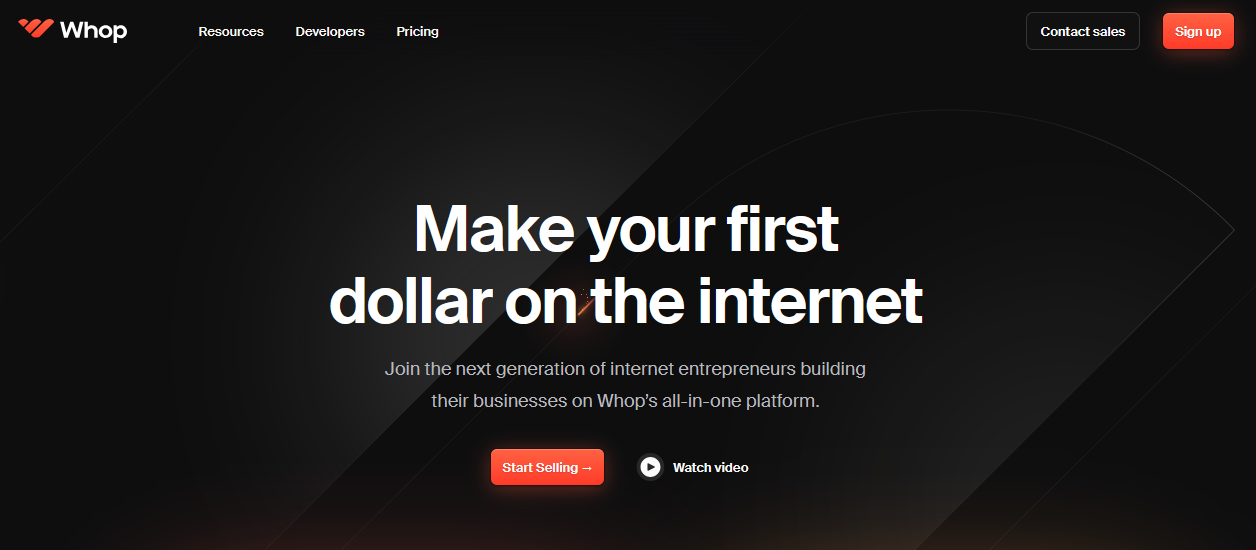
Best for:
Creators looking for a platform that scales with them as they grow.
How it works:
Whop lets you create a whop hub, a kind of personal internet space where you can create digital products like videos and offer them for free or sell access to them. Once you’ve finalized your idea and created a digital product, you can start selling on the platform. For example - create a premium community in your whop and sell products that align with your brand - like makeup courses for beauty vloggers or travel ebooks for travel influnecers. In your whop you can host giveaways, live calls, a forum, chat, and more. Then link your whop in your vlog bio to funnel your audience to your whop.
It takes 10 minutes or less to get started and you get access to all of Whop's features, such as 24/7 customer support and a dashboard of tools to manage and grow your business.
2. YouTube

Best for:
All creators looking for a broad audience reach
How it works:
YouTube enables you to monetize videos through advertisements, donations in super chat and super stickers, channel memberships, sponsorships, as well as direct sales of products or services.
3. Uscreen
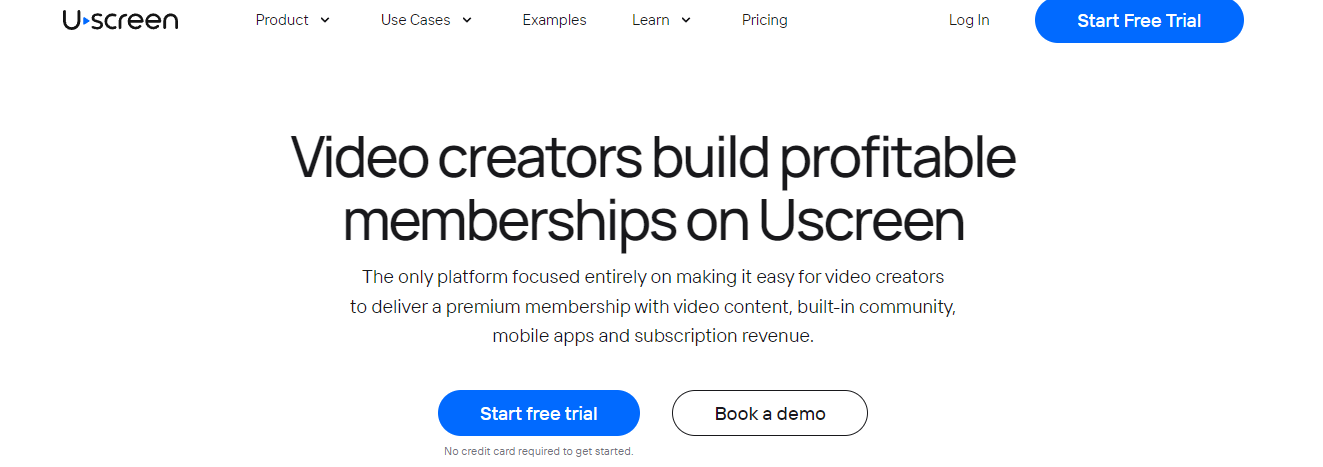
Best for:
Creators looking for a streamlined video content management system
How it works:
Uscreen allows content creators to build a video-on-demand (VOD) business. The system functions as a unified hosting platform, allowing you to manage the whole process, including editing videos, adding SEO elements to the title and URL, and publishing the content.
It even offers analytics so you can keep track of your viewership, subscribers and other metrics, including payments.
Start Your Vlogging Journey Today
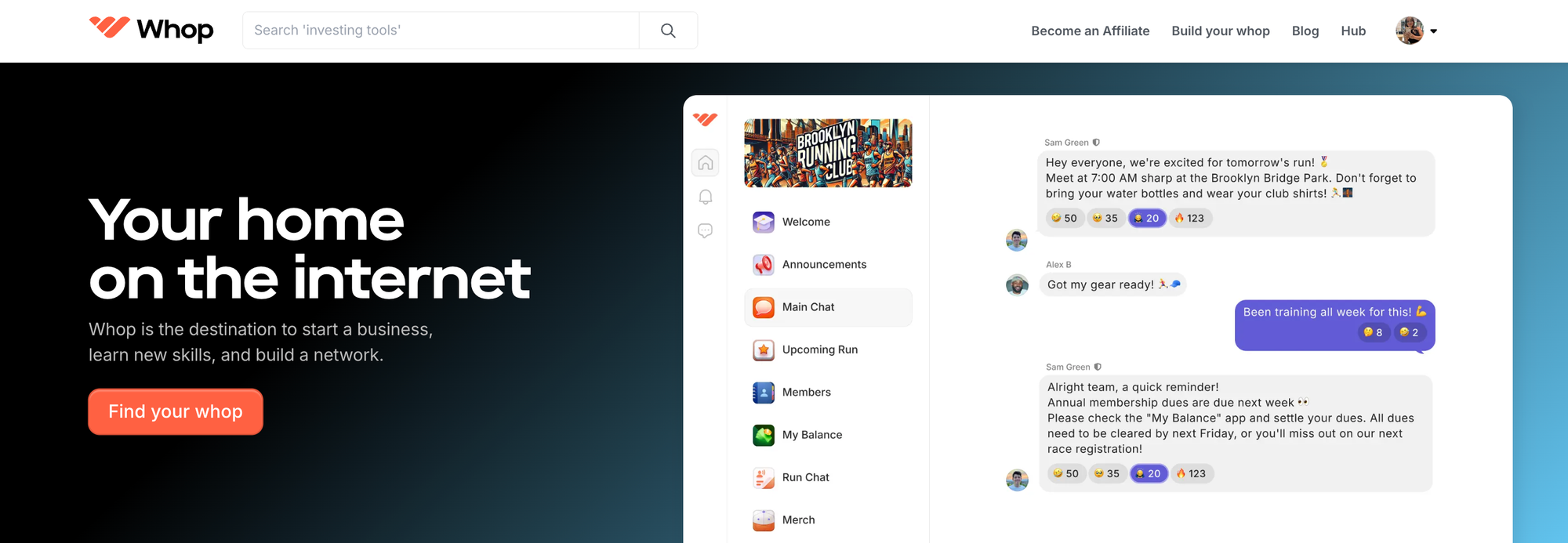
Your vlogging journey is unique, and the key to success lies in authenticity and persistence. Renowned vlogger Casey Neistat once said, "Just keep uploading." This encapsulates the essence of vlogging—consistency and passion are your true allies.
Vlogging is not just about storytelling; it's about sharing your world through your lens. So, grab your camera, and start your adventure today - and don't forget to monetize your vlog with Whop!
FAQs
The most commonly asked questions about starting a blog - answered for you, right here.
Do vloggers get paid?
Yes, vloggers are paid in many ways. Some vloggers earn through video ads while collaborating with brands for paid sponsorships, others sell their products and services.
How do I start vlogging and get views?
To start vlogging and to get views, you need a niche and target audience, good quality equipment, professional video editing skills and continuous engagement with your audience. To increase your reach, try to collaborate with other vloggers and influencers.
How to edit a vlog?
To edit a vlog, you can start by trimming and rearranging video clips; this ensures the vlog follows an order that makes sense to the viewer. Remove content that seems off-topic or doesn’t add much value to the video. Your vlog’s introductory hook is important, so take the time to fine-tune it and ensure it grabs the viewer’s attention.


